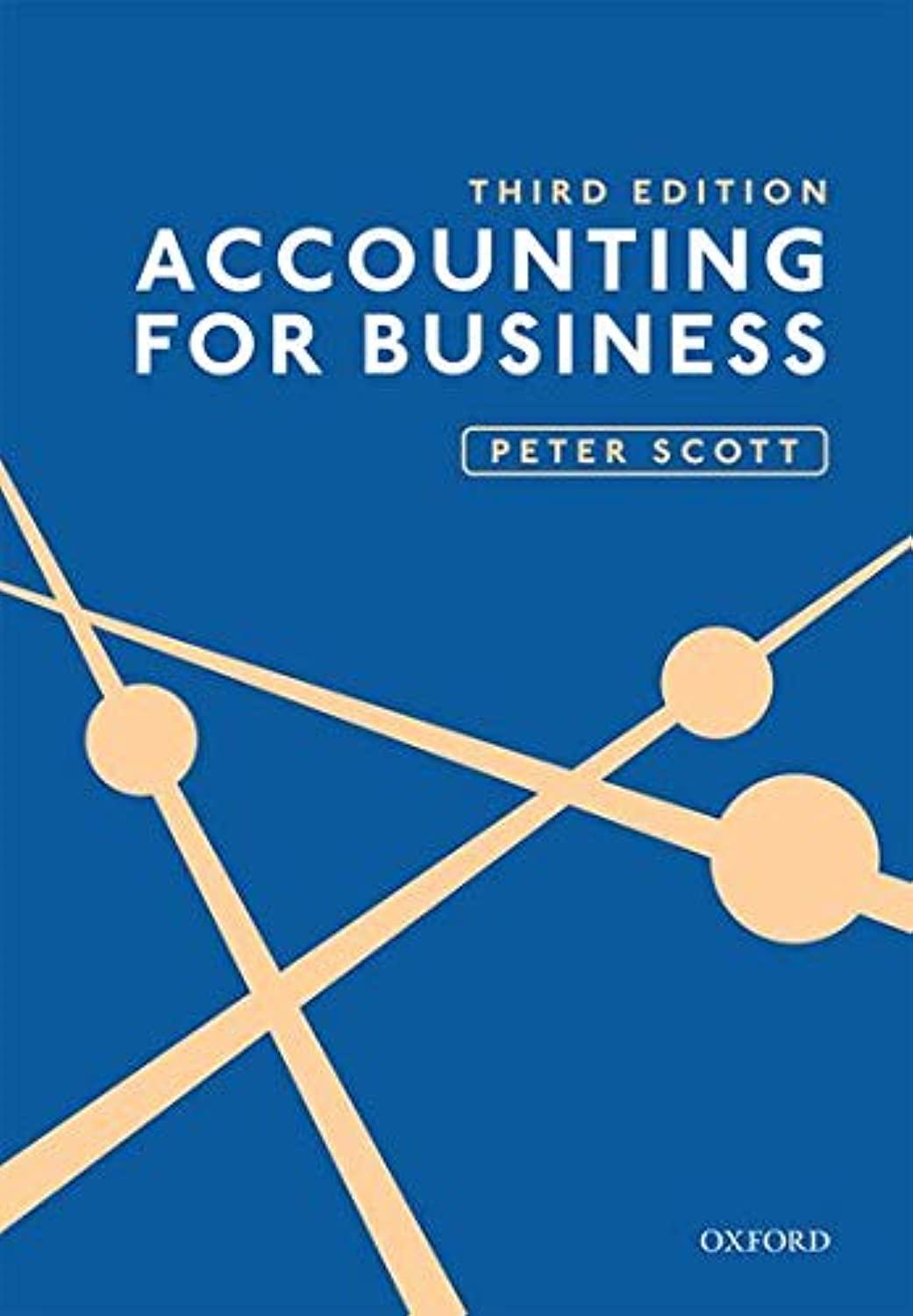Question
1. Danton Company manufactures two products, Product F and Product G. The company expects to produce and sell 600 units of Product F and 3,000
1. Danton Company manufactures two products, Product F and Product G. The company expects to produce and sell 600 units of Product F and 3,000 units of Product G during the current year. The company uses activity-based costing to compute unit product costs for external reports. Data relating to the company's three activity cost pools are given below for the current year: Expected Activity Activity Cost Pool Estimated Overhead Costs Product F Product G Total Machine setups $13,720 140 140 280 Purchase orders $74,730 630 960 1,590 General factory $15,000 600 2,400 3,000 Required: Using the activity-based costing approach, determine the overhead cost per unit for each product. 2. Capes Corporation is a wholesaler of industrial goods. Data regarding the store's operations follow: ? Sales are budgeted at $390,000 for November, $360,000 for December, and $340,000 for January. ? Collections are expected to be 85% in the month of sale, 10% in the month following the sale, and 5% uncollectible. ? The cost of goods sold is 80% of sales. ? The company purchases 40% of its merchandise in the month prior to the month of sale and 60% in the month of sale. Payment for merchandise is made in the month following the purchase. ? The November beginning balance in the accounts receivable account is $77,000. ? The November beginning balance in the accounts payable account is $320,000. Required: a. Prepare a Schedule of Expected Cash Collections for November and December. b. Prepare a Merchandise Purchases Budget for November and December. 3. Flick Company uses a standard cost system in which manufacturing overhead is applied to units of product on the basis of standard direct labor-hours. The company's total budgeted variable and fixed manufacturing overhead costs at the denominator level of activity are $20,000 for variable overhead and $30,000 for fixed overhead. The predetermined overhead rate, including both fixed and variable components, is $2.50 per direct labor-hour. The standards call for two direct labor-hours per unit of output produced. Last year, the company produced 11,500 units of product and worked 22,000 direct labor-hours. Actual costs were $22,500 for variable overhead and $31,000 for fixed overhead. Required: a. What is the denominator level of activity? b. What were the standard hours allowed for the output last year? c. What was the variable overhead spending variance? d. What was the variable overhead efficiency variance? e. What was the fixed overhead budget variance? f. What was the fixed overhead volume variance? 4. (Ignore income taxes in this problem.) Mattice Corporation is considering investing $490,000 in a project. The life of the project would be 7 years. The project would require additional working capital of $34,000, which would be released for use elsewhere at the end of the project. The annual net cash inflows would be $123,000. The salvage value of the assets used in the project would be $49,000. The company uses a discount rate of 11%. Required: Compute the net present value of the project. 5. Compare and contrast Grenzplankostenrechnung (GPK) and Activity-based Costing (ABC). Are there advantages of combining both? Why or Why not? 
Step by Step Solution
There are 3 Steps involved in it
Step: 1

Get Instant Access to Expert-Tailored Solutions
See step-by-step solutions with expert insights and AI powered tools for academic success
Step: 2

Step: 3

Ace Your Homework with AI
Get the answers you need in no time with our AI-driven, step-by-step assistance
Get Started


